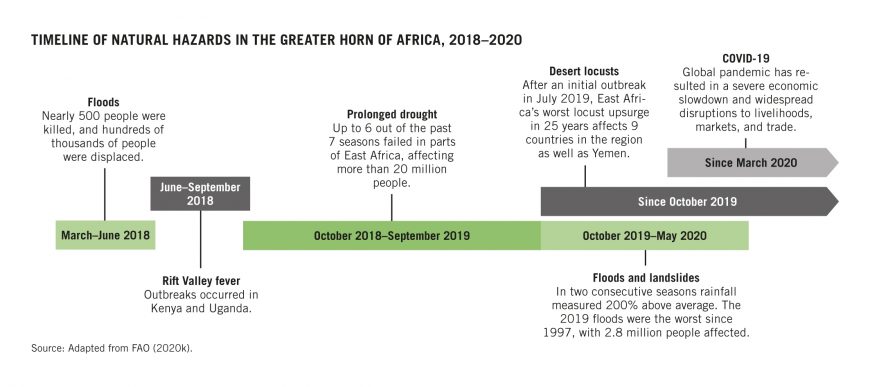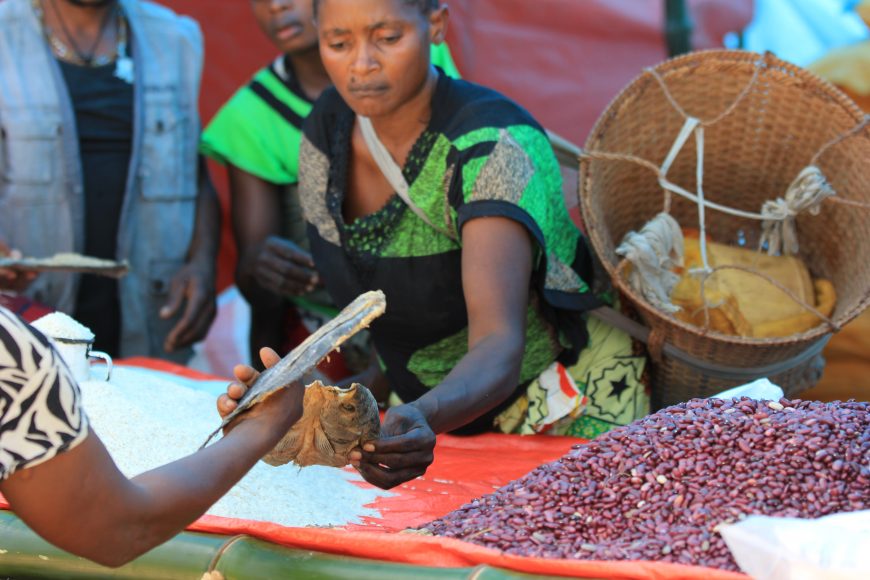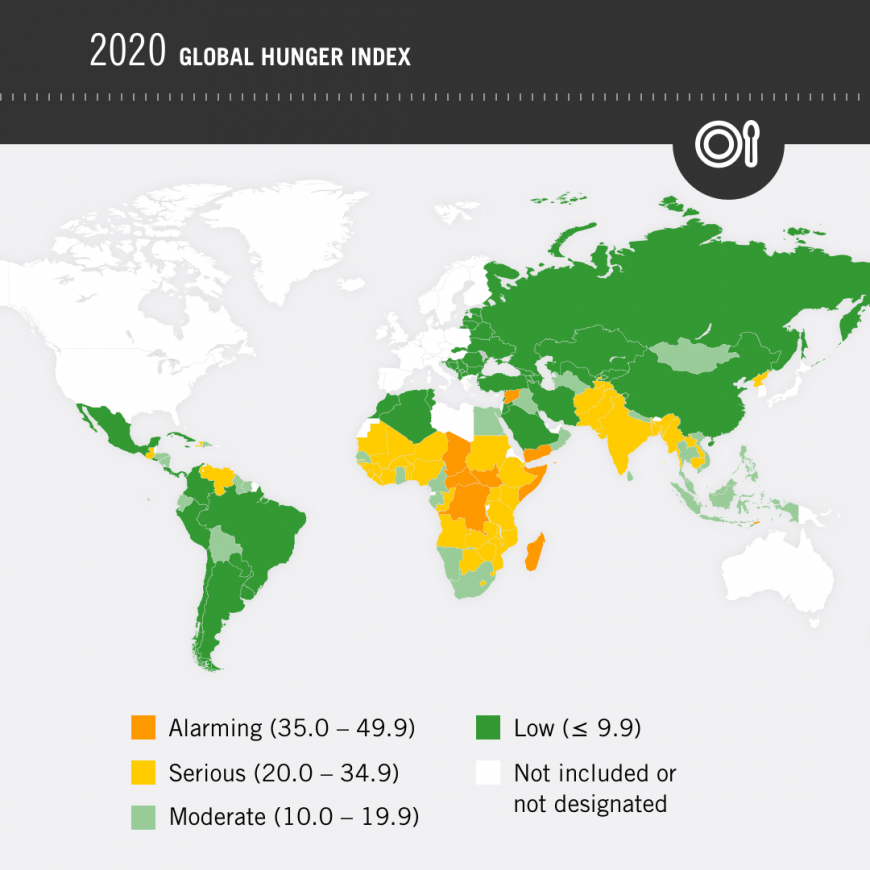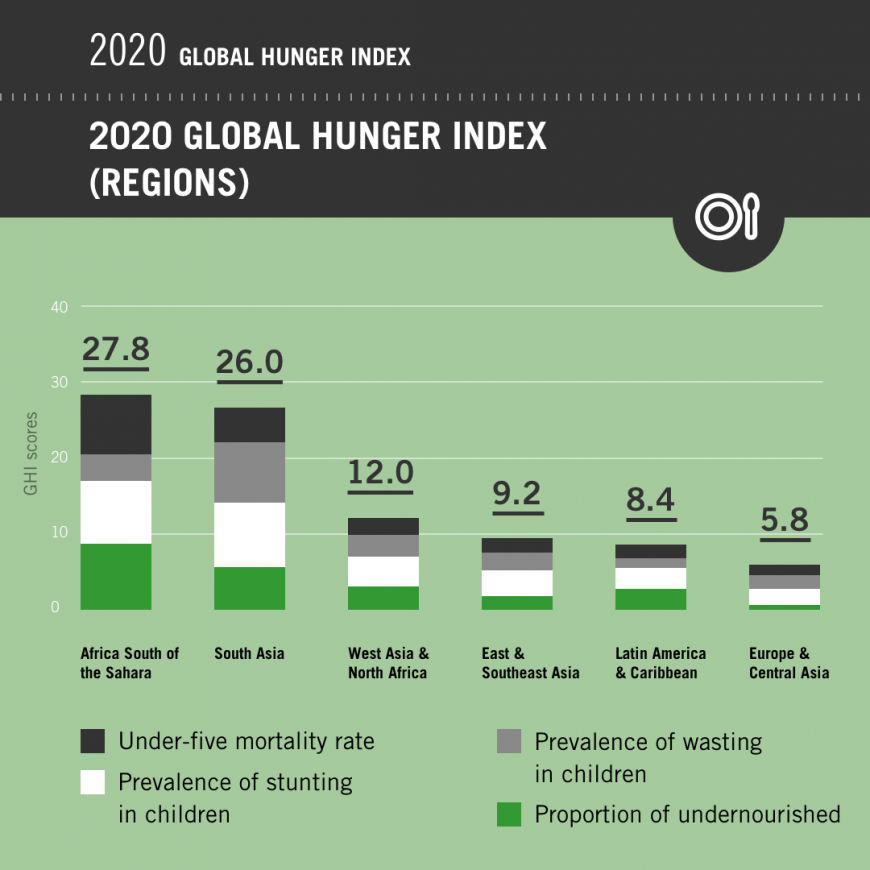The combination of the Covid-19 pandemic, conflict, climate change, and other global, regional and local crises has slowed global progress towards beating hunger.
Despite continued improvements over the past decade in certain regions and countries, these overlapping crisis inevitably took a toll on global food security. However, the unfavorable outlook is not exclusively the result of ‘Force Majeur;’ the 2020 Global Hunger Index (GHI) report emphasis how the unfairness and inadequacies of the existing food system make responding to such crises more difficult and has hampered efforts to end hunger by 2030.
‘COVID-19 has made it clearer than ever that our food systems, as they stand, are inadequate to the task of achieving Zero Hunger. The unprecedented disruptive force of the pandemic has once again laid bare the fragility and inequities of our current globalized food systems, the threat to global health and food security posed by increasing human impacts on the environment and wildlife, and the need to address these challenges in a holistic, ambitious way. ‘ – Matthias Mogge, Secretary General of Welthungerhilfe and Dominic MacSorley, Chief Executive Officer of Concern Worldwide.
Overlapping crises in Democratic Republic of the Congo and Horn of Africa deepen food security emergencies
The case studies of DRC and the Greater Horn of Africa both illustrate the impact of overlapping crisis on food security. The DRC faces a tremendously challenging situation of widespread extreme poverty, ongoing armed conflict and political instability, and multiple health emergencies. In 2019, the country faced the second worst food crisis in the world and this year, the GHI notes its levels of hunger as alarming with 41,8% of child stunting, 6.5% of child wasting and 8.8% of child mortality.
Similarly, in the Greater Horn of Africa, the double threat of COVID-19 and desert locusts has had an unprecedented impact on the economy of the countries, making already vulnerable populations at a greater risk of food insecurity. In addition, restriction measures related to COVID-19 have been particularly harmful to local economies and have hampered the response to the locust infestation. Today there are a reported 8.5 million people in acute food crisis in Ethiopia, 6.48 million in South Sudan, 2.1 million in Somalia and 985 000 in Kenya. Levels of hunger range from serious to alarming in the area.

ACTED’s response
Amidst the extreme challenges faced by communities in the DRC, Horn of Africa, and elsewhere, ACTED is committed to the fight against hunger, supporting populations that have suffered from conflict, natural disaster or socio-economic hardship.
Present in DRC since 2003, ACTED continues to respond to the immediate needs of populations affected by violent conflicts, natural disasters, epidemics and chronic poverty in country. Through emergency food security, the implementation of Water, Sanitation and Hygiene services and shelter assistance, as well as longer term agricultural and economic recovery programs, ACTED teams aim to support communities facing this complex humanitarian crisis.

In the Greater Horn of Africa, ACTED, which co-leads the Regional Desert Locust Alliance, an alliance of over 60 National and International NGO’s responding to the crisis, is providing amongst other activities cash assistance to vulnerable communities to meet the food and basic needs of households damaged by the recent flooding and the locust infestation in Kenya.
2020 GHI SCORES : What are the global trends ?

Despite a decline in global hunger since the 2000s, progress remains too slow in many countries. The report highlights 11 countries (including DRC, Somalia, South Sudan, Syria and Yemen) in which hunger is confirmed, or provisionally considered ‘alarming’ levels, an increase of seven countries on last year. A further 40 countries (including: Kenya, Mali, Nigeria, Haïti, Afghanistan, Pakistan, Bangladesh) showed ‘Serious’ levels of hunger.
At the end of 2019, 690 million people were classified as undernourished with 135 million people experiencing crisis levels, or worse, of acute food insecurity. In addition, the number of children who suffer the consequences of hunger remains very high, with 144 million stunted children and 47 million who are wasted across the globe. Many countries, though, show progress against hunger, with 26 countries with GHI scores indicating moderate levels and 47 countries with low levels.

Report policy recommendations
In order to end hunger by 2030, the GHI recommends to reshape current food systems as well as integrating them into a broader political effort. The main recommendations from the report are:
- To make food systems work better for both people and the planet
- Improve food systems governance
- Expand social investments for resilience
- Make emergency and long-term development interventions more equitable and sustainable
- Strengthening international cooperation and regulations
What is the GHI?
Welthungerhilfe and Concern Worldwide have published The Global Hunger Index (GHI) tool on an annual basis since 2006. The aim of the report is to comprehensively measuring and tracking hunger at the global, regional, and national. It is designed to:
- raise awareness and understanding of the struggle against hunger,
- provide a way to compare levels of hunger between countries and regions,
- and call attention to those areas of the world where hunger levels are highest and where the need for additional efforts to eliminate hunger is greatest, making it an efficient tool for advocacy purposes.
GHI scores are based on a formula that captures three dimensions of hunger—insufficient caloric intake (undernourishment), child undernutrition, and child mortality using four indicators: undernourishment, child wasting, child stunting and child mortality.